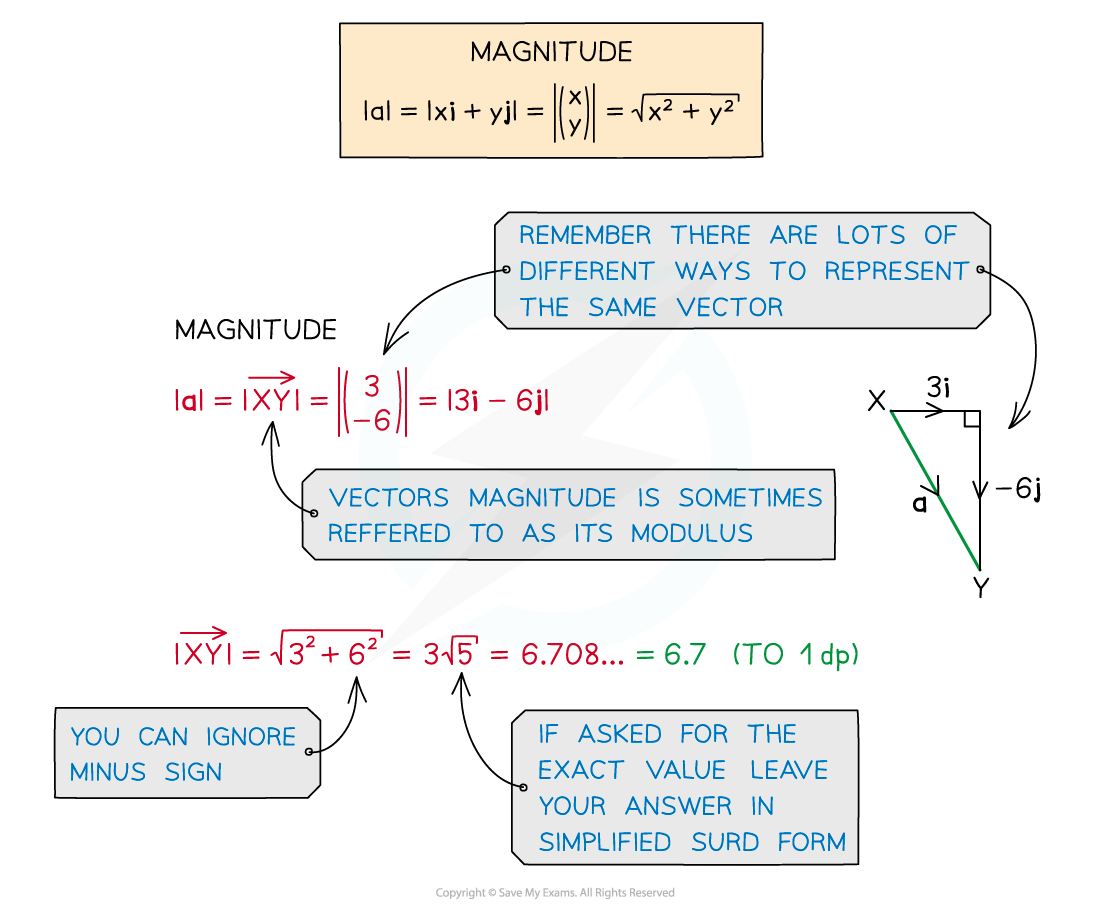Magnitude & Direction (OCR AS Maths A): Revision Note
Exam code: H230
Did this video help you?
Magnitude & direction
What is the magnitude of a vector?
The magnitude of a vector is simply its size
It also tells us the distance between two points
You can find the magnitude of a vector using Pythagoras’ theorem
The magnitude of a vector
is written
when typed (or
when handwritten)

To work out the unit vector in the direction of a given vector
A unit vector has a magnitude of 1
So to find the unit vector of a given vector, divide by its magnitude

What is the direction of a vector?
Vectors have opposite direction if they are the same size but opposite signs
e.g. if
or
then
or
The direction of a vector is what makes it more than just a scalar
Eg. two objects with velocities of 7 m/s and ‑7 m/s are travelling at the same speed but in opposite directions
Two vectors are parallel if and only if one is a scalar multiple of the other
For real-life contexts such as mechanics, direction can be calculated from a given vector using trigonometry (see Right-Angled Triangles)
It is usually calculated anticlockwise from the positive x-axis (unless otherwise stated eg. a bearing)
How do I write a vector in component form?
We have already seen that vectors can be written in different forms
Component form means writing a vector in terms of i and j components
Given the magnitude and direction of a vector you can work out its components and vice versa


Examiner Tips and Tricks
Diagrams can help, especially when working out direction – if there isn’t a diagram, draw one.
Remember, resolving a vector just means writing it in component form.
Worked Example


Unlock more, it's free!
Did this page help you?